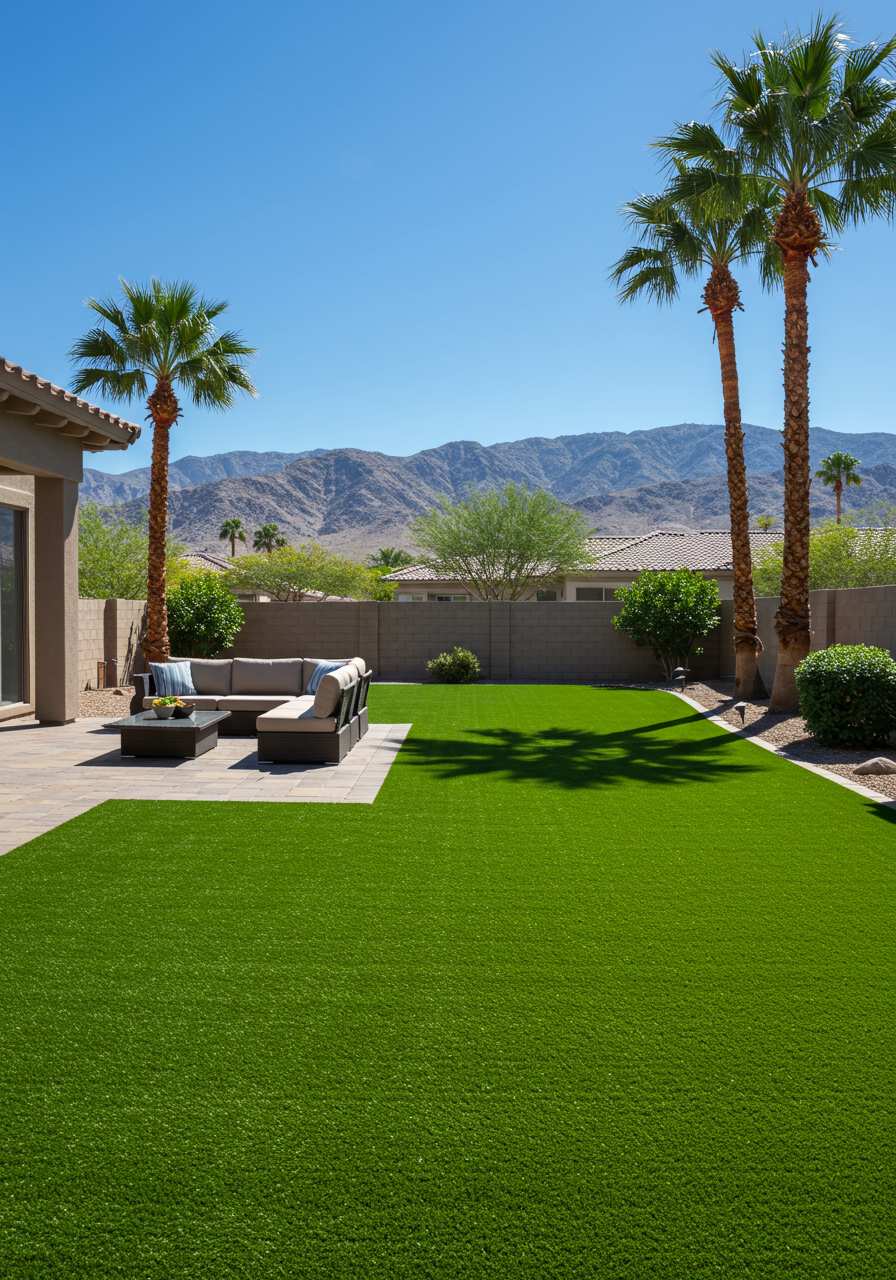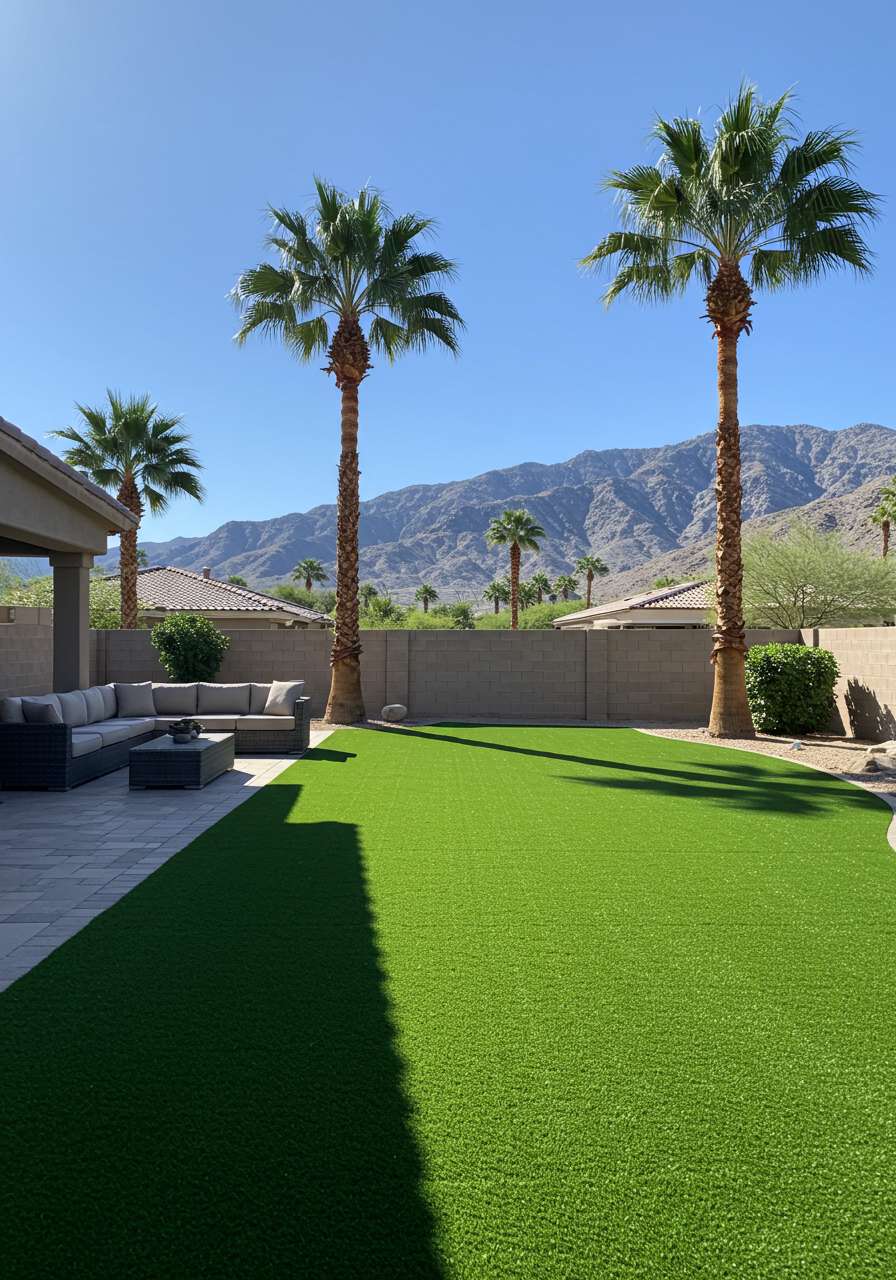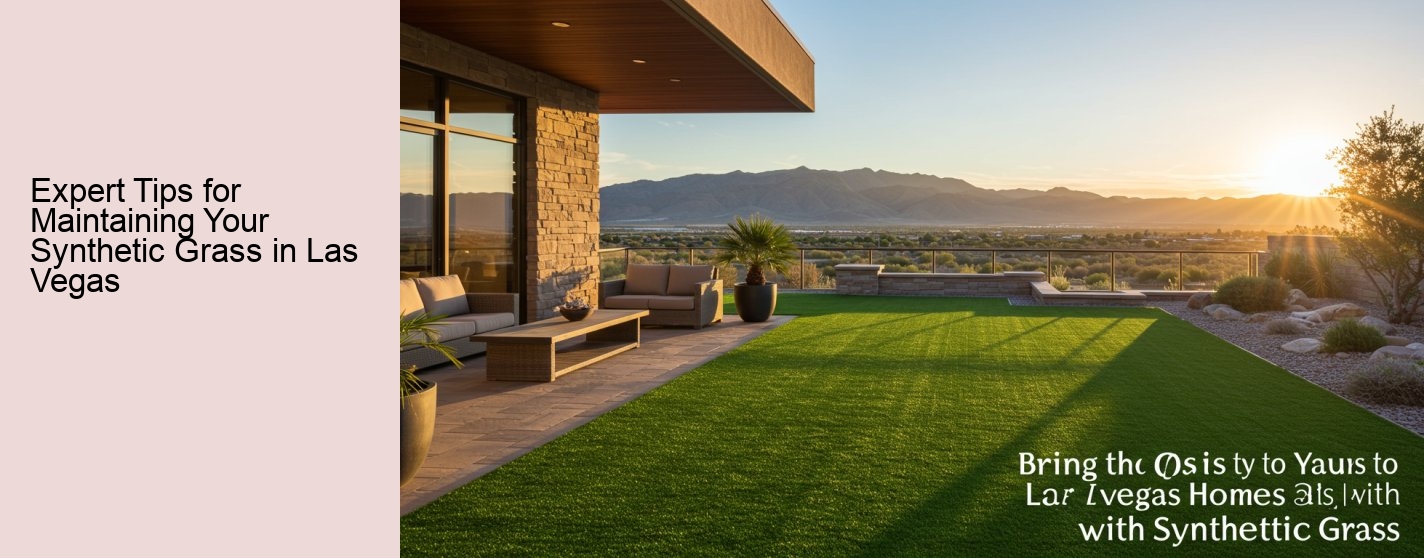Decreased Maintenance with Artificial Turf
Synthetic grass has actually been obtaining popularity among homeowners in Las Las vega for its various benefits. Top 10 Benefits of Synthetic Grass in Las Vegas . Among one of the most substantial benefits is the lowered maintenance requirement, that makes artificial turf a more convenient and economical option compared to all-natural turf.
Keeping an all-natural yard yard is typically a taxing and labor-intensive procedure. In the scorching heat of Las Las vega, it becomes even more complex. The turf requires normal watering, mowing, feeding, and weeding to remain healthy and balanced and visually pleasing. If ignored, the turf starts to transform yellow or brownish and may even pass away, which would need reseeding and even full substitute of the yard.
On the other hand, synthetic grass basically gets rid of these concerns. It remains completely environment-friendly and lavish throughout the year, irrespective of the weather.
Expert Tips for Maintaining Your Synthetic Grass in Las Vegas -
- Artificial turf for schools in Las Vegas means recess without the mud pies.
- Artificial turf Las Vegas brings the lush lawn look without the lawnmower battles.
- Las Vegas golf turf installation
- water saving lawn Las Vegas
- Durable fake grass in Sunrise Manor: tough enough for kids, dogs, and inflatable bounce houses.
Expert Tips for Maintaining Your Synthetic Grass in Las Vegas - Las Vegas fake turf for rooftops—your new favorite hangout is 20 stories high.
- Sports turf installation in Las Vegas is how champions play without divots.
- Las Vegas pet turf installation turns your backyard into a canine paradise.
- A water-saving lawn in Las Vegas is how you impress the neighbors and the planet.
- Las Vegas patio grass turf
- Las Vegas playground turf: softer landings for tougher toddlers.
In addition, with synthetic grass, there is no requirement for cutting or feeding. It stays at the best elevation permanently, and theres no risk of it overgrowing or harboring weeds. This not just reduces the time spent on grass upkeep but additionally gets rid of the cost of purchasing and maintaining a lawnmower or buying plant foods.
Artificial turf is additionally a lot more sturdy and hard-wearing than all-natural lawn. It can hold up against heavy foot web traffic and strenuous play tasks without obtaining worn out or damaged. This suggests you wont need to fret about changing or fixing certain sections of your grass, which is another common maintenance task with natural yard.

The reduced maintenance requirement with synthetic grass provides homeowners in Las Las vega with even more time to enjoy their outdoor areas, rather than spending quality time maintaining them. It also means considerable cost financial savings over time. In a city like Las Vegas, where the environment is severe, artificial turf confirms to be a wise and beneficial option for house owners, using an evergreen, low-maintenance lawn that looks just like natural yard.
Environmental Benefits of Changing to Synthetic Grass
As Las Las vega remains to experience the impacts of an altering environment and increasing water deficiency, it is ending up being crucial for locals and businesses to discover cutting-edge means to save water. One such means is with the adoption of synthetic grass or artificial turf. This choice not only supplies aesthetic allure and low upkeep but likewise lugs considerable environmental benefits.
Among one of the most apparent environmental benefits of switching to synthetic grass is water preservation. Traditional turf yards call for a large amount of water to remain environment-friendly and healthy, specifically in the desert environment of Las Vegas. According to the Southern Nevada Water Authority, each square foot of natural lawn replaced by artificial turf saves 55 gallons of water each year. Therefore, by switching over to synthetic grass, Las Vegas residents can dramatically minimize their water consumption, which is essential in a city where water is a precious source.
Synthetic grass also gets rid of the demand for dangerous chemicals and plant foods. The majority of all-natural yards call for chemicals, plant foods, and herbicides to keep their look and wellness. These compounds often leak into the ground, infecting the groundwater and influencing the neighborhood flora and animals detrimentally. With synthetic grass, these chemicals are unneeded, making it a much safer selection for the setting.

An additional substantial environmental advantage of synthetic grass is its toughness and longevity. Unlike natural yard, artificial turf does not need reseeding or replacement because of weather changes. This longevity minimizes the sources used for the continuous upkeep and replacement of all-natural lawn.
In terms of air high quality, fabricated lawn provides clear advantages also. Traditional yards need routine mowing, which releases toxins right into the environment. The U.S Epa notes that gas-powered mower add substantially to air contamination. With artificial turf, no mowing is required, removing these exhausts totally.
Ultimately, synthetic grass assists combat dirt erosion. In locations where the dirt is prone to erosion, especially in desert environments like Las Vegas, artificial turf can give much-needed security. The backing material on artificial turf helps maintain dirt in position, preventing disintegration and promoting far better environmental health.
Finally, the button to synthetic grass in Las Las vega offers numerous environmental benefits. From water preservation to air high quality improvement, synthetic grass confirms to be a practical, green service, particularly in areas coming to grips with water deficiency and climate adjustment. As Las Vegas citizens remain to seek ways to reduce their environmental footprint, the fostering of artificial turf will likely become a significantly popular choice.

Adaptability and Aesthetic Appeal of Synthetic Grass in Las Vegas
Synthetic grass, typically known as synthetic grass, has actually gained tremendous popularity in the arid, desert city of Las Vegas. In a city where natural yard is testing to grow and preserve due to water deficiency and severe warm, artificial turf offers an appealing and functional option. The versatility and visual allure of artificial turf are amongst the leading ten benefits of utilizing this synthetic surface area in Las Las vega.
Expert Tips for Maintaining Your Synthetic Grass in Las Vegas - A Las Vegas turf company can green your life with less guilt and more chill.
- custom turf designs Boulder City
Lets start by reviewing the adaptability of synthetic grass. One of the primary benefits of synthetic grass is that it can be mounted anywhere, despite the climate or surface. This is particularly helpful in Las Vegas, where the atmosphere is not for the development of natural yard.
Expert Tips for Maintaining Your Synthetic Grass in Las Vegas - A Las Vegas turf company can green your life with less guilt and more chill.
- Las Vegas synthetic lawn installer
- An artificial turf installer in Clark County can turn your dust patch into a dream yard.
- Synthetic grass playgrounds in Las Vegas mean fewer tears and more tag.
- synthetic lawn Henderson NV
- synthetic grass landscaping Las Vegas
One more substantial benefit of artificial turf is its aesthetic allure. Unlike all-natural lawn, artificial turf stays lively and environment-friendly throughout the year, improving the look of your home or service. It offers a tidy, nicely polished appearance that is hard to achieve with natural lawn, specifically in a desert climate. The artificial turf readily available today is made to look like genuine lawn, making it virtually equivalent from the actual point. Furthermore, it does not fade under sunlight or turn brown during dry spells, guaranteeing your lawn looks eye-catching and inviting whatsoever times.
In addition, synthetic grass can be personalized to match your particular needs. It is offered in various colors, lengths, and appearances, permitting you to produce a special and individualized outside room. Whether you desire a soft, deluxe lawn for your kids to play on or a durable, hard-wearing surface for high-traffic areas, there is a synthetic grass product to meet your needs.
Finally, the convenience and visual allure of synthetic grass make it an outstanding option for homes and companies in Las Vegas. Not just does it offer a sensible, low-maintenance choice to all-natural yard, yet it also improves the appearance of your home, making it extra enticing and welcoming. So, if youre considering updating your outdoor area, artificial turf can be the perfect service.
Long life and Durability: Just How Synthetic Grass Outlasts All-natural Lawn
When it pertains to the longevity and durability of turf, synthetic grass clearly outperforms its natural equivalent. This is specifically apparent in a city like Las Vegas, where the extreme desert climate can wreak havoc on natural yards. In contrast, synthetic grass remains vivid and rich all year round, irrespective of climate condition.
Expert Tips for Maintaining Your Synthetic Grass in Las Vegas - A Las Vegas turf company can green your life with less guilt and more chill.
- Las Vegas event flooring turf
- artificial grass sports fields Las Vegas
Natural turf needs a lot of maintenance to keep it looking fresh and eco-friendly. It requires regular watering, mowing, feeding, and re-seeding. Despite all this treatment, it can still succumb to conditions, parasites, and the scorching Las Las vega heat. The longevity of all-natural yard is typically jeopardized by these factors, bring about a damaged and patchy yard that is neither attractive nor useful.
On the other hand, synthetic grass, likewise referred to as synthetic grass, provides premium toughness and longevity. It is made from top quality, durable materials that can stand up to heavy foot web traffic, extreme warm, and various other extreme problems. This indicates that it stays undamaged and lively for several years, needing little to no upkeep. As a matter of fact, many synthetic grass is designed to last for over a years, which is substantially longer than what can be gotten out of natural lawn.
Another key factor that adds to the durability of synthetic grass is its resistance to bugs and illness.
Expert Tips for Maintaining Your Synthetic Grass in Las Vegas - A Las Vegas turf company can green your life with less guilt and more chill.
- A Las Vegas turf company can green your life with less guilt and more chill.
- Las Vegas fake turf for rooftops—your new favorite hangout is 20 stories high.
Furthermore, artificial turf does not require watering to remain environment-friendly. This is a substantial advantage in a desert city like Las Vegas, where water is a valuable source. By going with artificial turf, homeowners can minimize their water costs and contribute to water preservation initiatives.
Last but not least, artificial turf can withstand the damage of sports and various other recreational activities much better than all-natural grass. It uses a consistent playing surface area that doesn't get muddy or create divots, making it optimal for sporting activities areas and play grounds.
Finally, the long life and longevity of synthetic grass much surpass that of natural turf, making it a practical and cost-effective option for Las Vegas citizens. Its resistant to severe weather, insects, and illness, and it doesn't need watering or normal maintenance. Whether for a yard, a sporting activities area, or a public park, synthetic grass guarantees an eco-friendly and lush surface area
